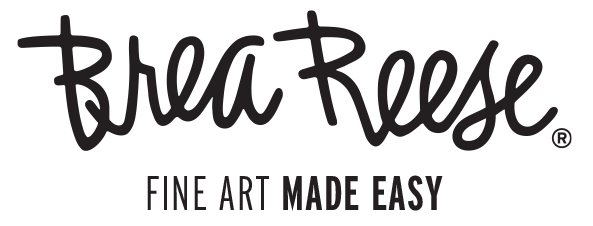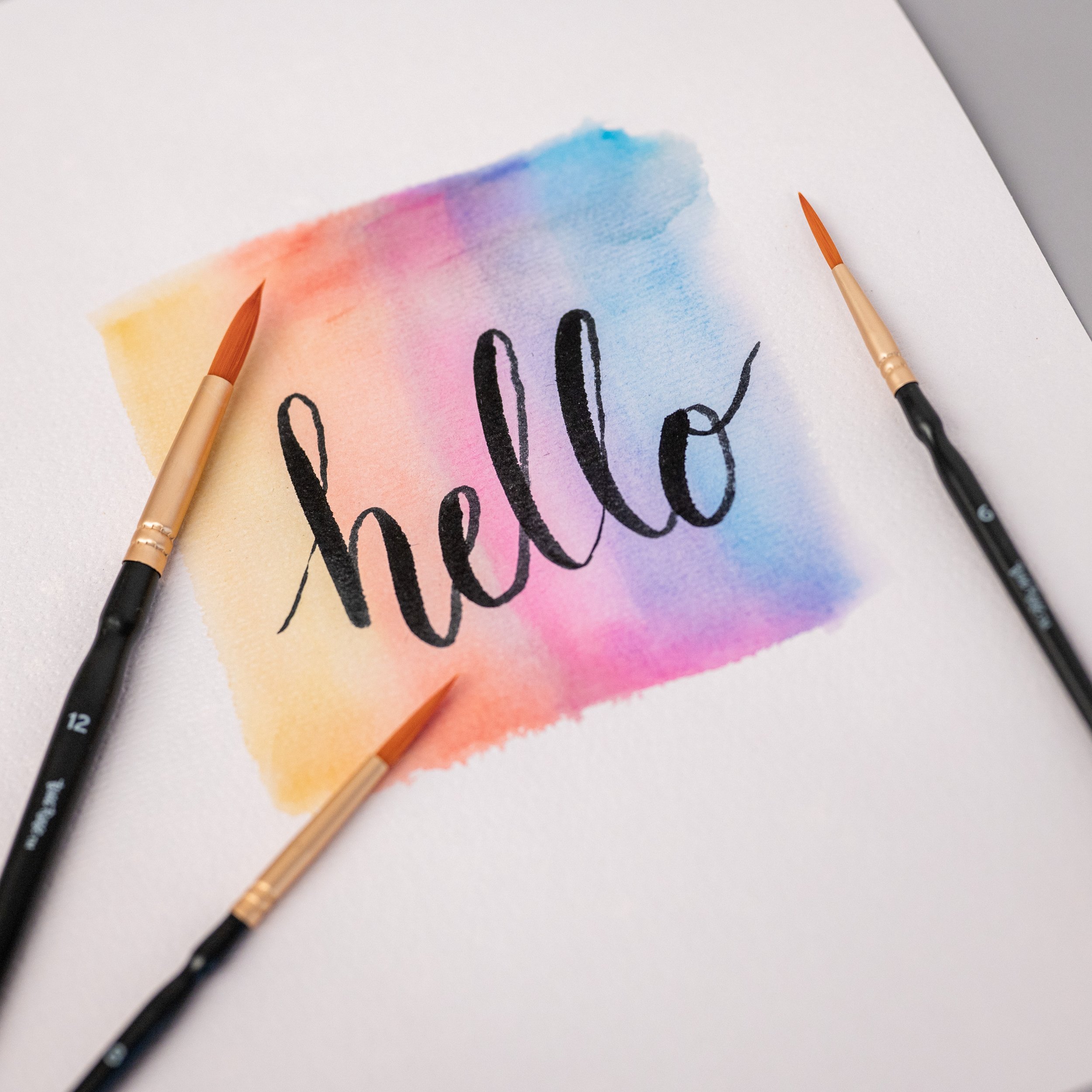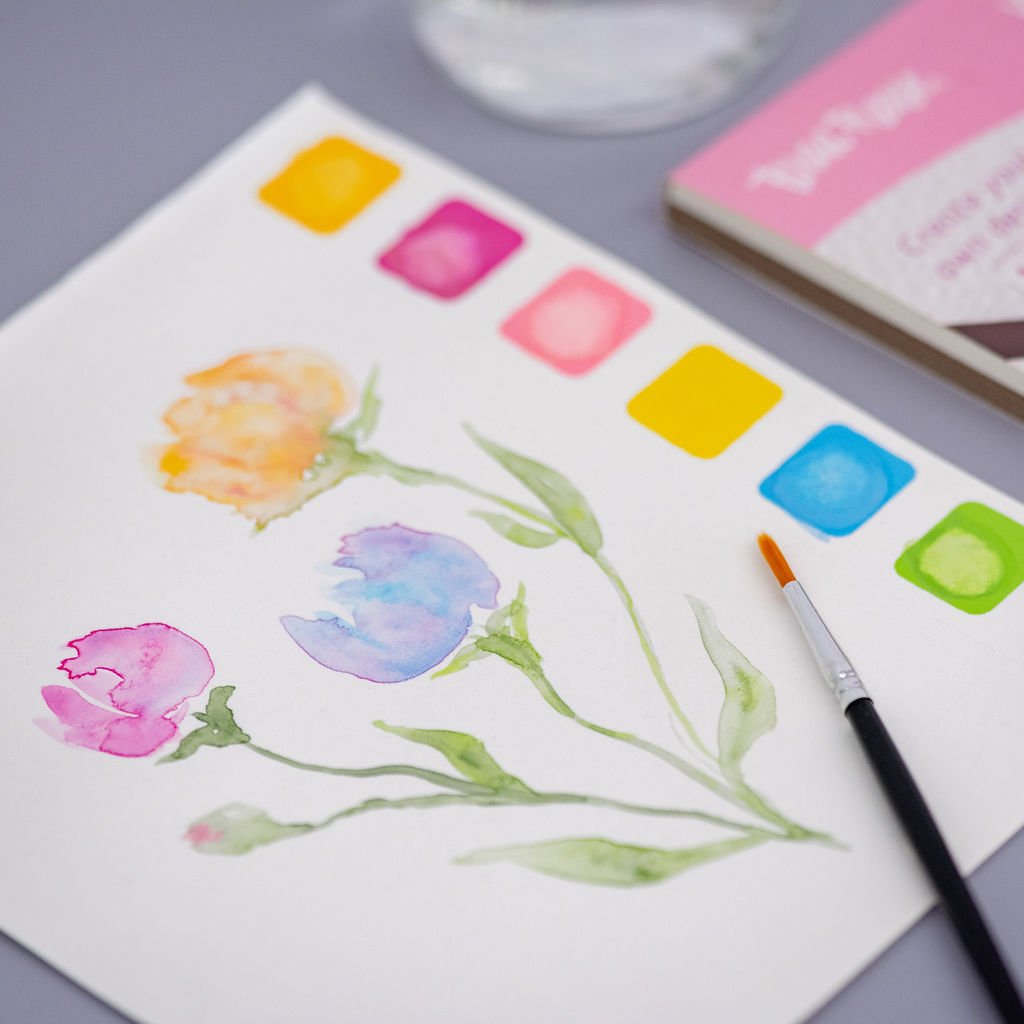Getting to Know: Watercolor Painting
Watercoloring is a fun way to get creative (and a tad messy). Watercolor paints are made up of a few simple ingredients that are finely ground to create a colored pigment. Because this medium relies on water to move the paint to paper, watercoloring takes quick thinking and the willingness to improvise. Watercolor artwork is ethereal and full of expression—it’s the perfect medium to experiment with wet and dry elements, layers, and blending color combinations. Be sure to prep before you paint—here’s a checklist of all the necessities you’ll need to make your next masterpiece:
Cold-pressed, 105 lb watercolor paper—it’s a thick material that won’t leak through or rip when you go heavy on the water.
High-quality paints and brushes—prevent your artwork from fading over time.
Pencils—before diving into those paints, sketch out the foundation of your design with a pencil so you feel more confident when you put your brush to the canvas.
Now that you’ve got all your materials lined up and ready, it’s time to grab a blank canvas (or paper pad) and play around with different styles, strokes, and brush angles. It’s important to familiarize yourself with brush behaviors and what works best for you. The more you paint, the more you’ll develop your skills and you can slowly apply them to landscapes, portraits, and more.
Once you feel confident, it’s time to try a few basic techniques. Watercoloring can be rather unpredictable—it requires practice, patience, and lots of experimenting, so be sure to stay patient while you paint. Unlike other mediums like oil or acrylic, mistakes will show with watercolor and you might want to reach for a new piece of paper rather than try to salvage a design that’s not heading in a direction you’re happy with.
Water-to-paint ratios
Water control is one of the toughest parts of watercoloring. The rule of thumb is to find a balance between water and paint, so the mixture is watery but not sopping wet—you should be able to paint a smooth stroke without drying out too fast or steeping the paper in water.
Wet-on-wet techniques
This technique refers to painting over a piece of work that’s still wet. It’s used to create landscapes, skies, and flowy patterns. These soft lines and fluid textures can be unpredictable because you can never really control the way water will run along an already wet surface. That’s why this technique should never be used if you’re trying to create details or sharp lines. It’s important to note that a wet-on-wet stroke will continue to change as it dries—mentally prepare yourself for a variety of outcomes and allow your mind to flow with your work of art.
Wet-on-dry techniques
Wet-on-dry refers to layering your wet brush over a dry surface—whether that’s an untouched area of the canvas or layered over paint that’s already been drying for a while. This is a good technique when painting details, creating sharper edges, and deeper pigments. While you still need to wet your brush, you don’t need to soak it. Less water will add more texture for a sketch-like finish.
Clean brushes
When paint dries on brush bristles, it will deform and diminish the lifespan of your brush. Be sure to thoroughly wash each brush in between painting sessions, and don’t soak the tips in water so as not to ruin the shape of the bristles. Avoid storing them in damp spaces to prevent mold from forming. During a painting session, be sure to dip your brushes into clean water each time you’re using a new color to avoid muddling colors together. We suggest using two cups of water—one to wash your brush, the second to pick up clean water as you put paint to paper.
Layering
When done properly, layering can add dimension to a painting. When overdone, it can look murky and messy. To create clean, brightly-pigmented layers, let the paint dry in between—this technique is known as “glazing.” Even though it takes patience and dry time, it gives you more control and intensifies the colors in your work. Plus, watercolors tend to dry rather quickly, so you don’t have to wait too long to build layers of color, lines, and details.
Color Mixing
Creating a color chart might sound like overkill, but it can be really helpful and keep you from over-mixing colors and turning your painting into a muddy brown color. Keep a wheel of primary, secondary, and tertiary colors next to your canvas so you can mix and match colors to create just the right hue you’re looking for.
Watercolor is an affordable, portable medium that’s easy to clean up. While it isn’t without its challenges, watercolor forces you to slow down, savor the moment and paint with intention. This fun, free-flowing medium allows you to paint with emotion and think outside of the box as you create. With watercolor, your paintings will feature swirls of dimension, color, and texture that are designed to be beautiful, no matter the outcome.









